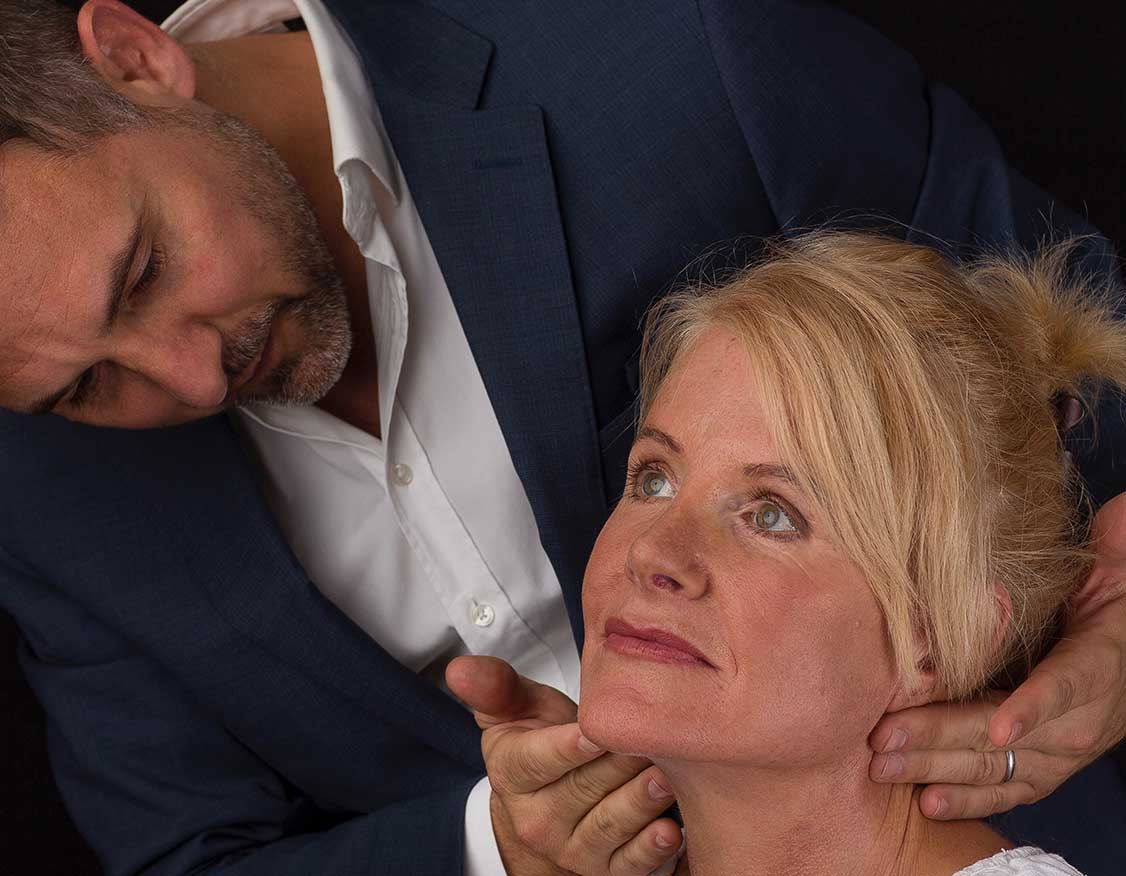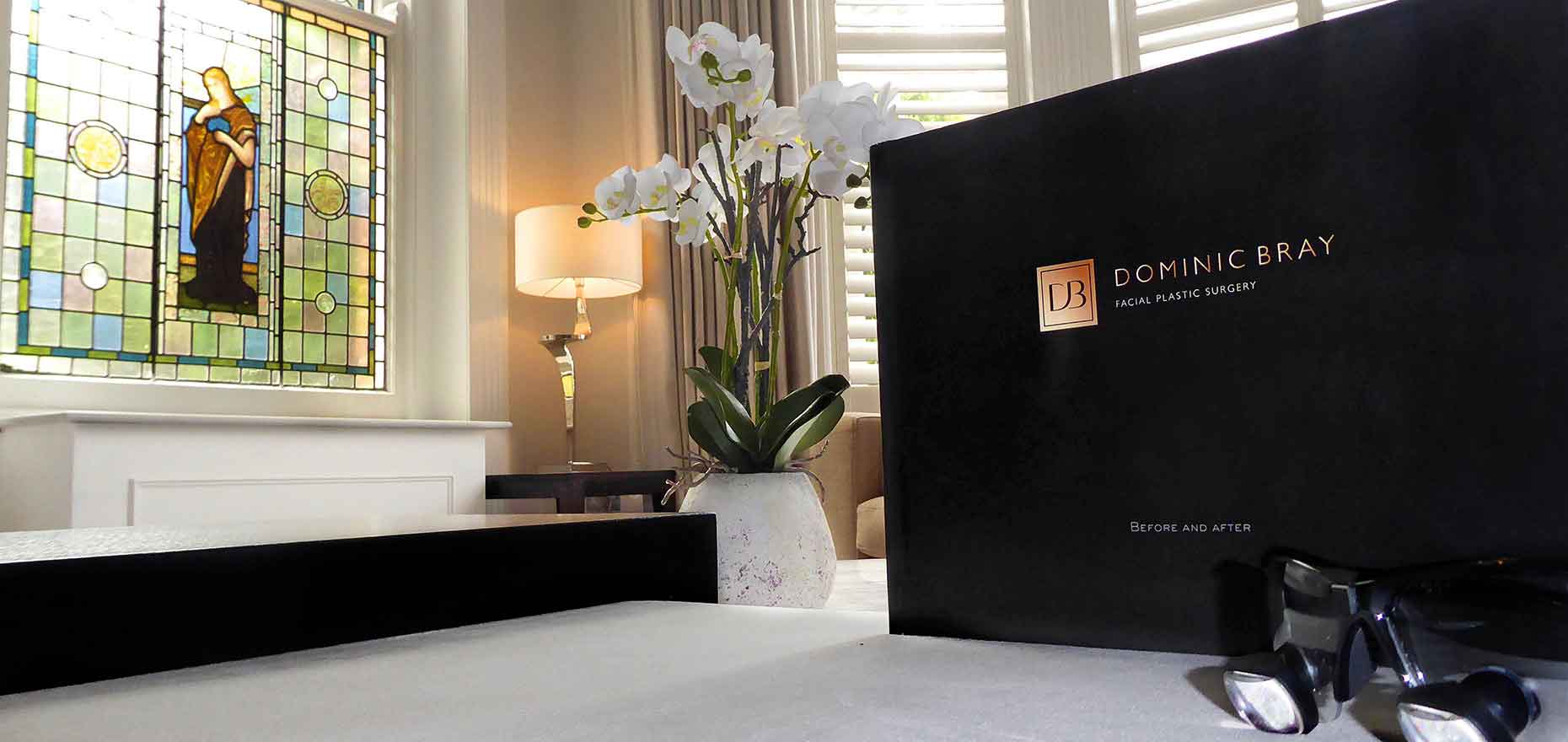Droopy Eyelids – Causes and Treatment
Droopy eyelids are a condition that can lead to a degree of distress, creating a tired appearance that suggests we are not at our peak.
The eyes are perhaps the key feature of the entire face, they are what we look at when we talk to someone, they are the focus of attention.
Droopy eyelids therefore act to make us look tired – even when we may not be. The appearance can dent a person’s confidence and self-esteem, this potentially crossing into numerous areas of life – both personal and professional.

However, the condition – also known as Ptosis – is treatable and the appearance of these tired, drooping eyelids can be rectified.
In this post, Dominic Bray, a leading cosmetic surgeon who focusses solely on the face, outlines the causes and then how a drooping eyelid can be treated. There is also information about the typical recovery period post surgery.
What Causes Droopy Eyelids?
The occurrence of a droopy eyelid is often the result of natural ageing.
When the condition occurs through age it is often as the levator muscle, which is responsible for lifting the upper eyelid, stretches becomes thin and loses effectiveness, causing the eyelid to fall.
However, there are other causes and the severity can vary greatly.
A skilled cosmetic surgeon will look at the eye and eyelid in relation to the whole of the face. In some cases, the hooded appearance is not actually related to the eyebrows themselves but to the descent of the eyebrow.
The aesthetic impact may be similar, but the treatment would be different – operating on the eyelids themselves would do nothing to solve the root cause or the issue around your eyes.
True eyelid hooding – blepharoplasty – is the combination of a number of issues.
The fat that cushions the eyeball can start to bulge, this giving rise to puffiness and the appearance of the droopiness.
The thinning of the skin and muscle, allied to this expansion of the fat, gives rise to the ptosis.
Lower Eyelid
Where the concern is the lower eyelid, the cause is a little different.
Ageing again leads to the natural descent of the protective cushion and capsule and this leads to hollowing under the eyes known as tear troughs. The stretching of this capsule enables fat to bulge through the tear trough, this makes it appear denser and leads to the look of bags under the eyes.
Given bags under the eyes are associated with tiredness, it gives an appearance of being somewhat tired permanently.
A number of treatment options are available to the experienced surgeon.
Ptosis In Younger People
Drooping eyelids can occur in children, though this is less common.
In these instances, known as congenital ptosis, the most common cause is that the levator muscle has not developed properly. The condition may be accompanied by amblyopia, known also, somewhat unkindly, as lazy eye.
Does A Drooping Eyelid Need Treating?
Whether the condition needs treating will vary by patient.
The drooping eyelids could be linked to a more serious condition, this more likely to be the case if both eyes are affected.
As with any other condition, it can be advisable to see a doctor who can provide medical advice.
If the drooping has come on gradually, over time then it is more likely to be the normal causes linked to ageing and stretching of skin and muscle as described. If this was the case, there would be no pressing medical requirement for treatment.
When only one eyelid droops it could be a stye or nerve injury. The condition could also be caused by surgery such as the removal of a cataract.
Drooping can be caused by more serious medical conditions such as cancer or a stroke.
A further need for treatment would be evident if the drooping led to more than cosmetic concerns, it is a condition that can impact vision. For some, the eyelids sag to the extent that they have to physically tilt their head backwards so that they can see effectively when conversing.
It is impossible in a web page to diagnose the cause for anyone’s drooping eyelids and to suggest whether they need ptosis surgery.
Anyone with concerns should book a consultation or seek medical assistance, ultimately a surgeon such as Dominic Bray can help to determine the cause and then carry out any procedure as necessary.
The Nature of Treatment
The nature of treatment for ptosis will vary be patient, the cause of the condition and the results desired.
When the drooping is very subtle or if it does not impact the person – either physically or psychologically – they are not in any way worried about it then clearly surgery would seem unnecessary.
Many will simply use some makeup to hide the natural, subtle impact of ageing.
What should be noted is that exercises will not help – there are sites devoted to strange exercises that supposedly help to remedy the impact of drooping eyelids. However, the issue is not lack of muscle, it is the stretching of muscle and natural descent of areas around the eye.
Any doctor would recommend exercise in normal circumstances – but not for removing the signs of ageing around your eyes.
Where surgery is opted for an eyelid surgeon has several options for the blepharoplasty. The aim, though, is to remove or reposition excess fat and remove or tighten skin laxity. Lost volume will be replaced.
Upper Blepharoplasty
For the upper eyelid, a small ellipse of skin is removed – along with some muscle – in the upper eyelid crease. The bulging pads can be accessed and the fat repositioned or removed as necessary.
The skin is then stitched with extremely fine suture, and the healing is natural and quick.
Lower Blepharoplasty
While other techniques are possible, these are somewhat outdated. Dominic Bray performs what is called a transconjunctival blepharoplasty – this uses a surgical incision behind the lower eyelid.
The lower orbital fat can then be accessed and a little either removed, or some repositioned over the tear trough. The eyelid skin then usually shrink-wraps over the new flat surface although this can be assisted with fat transfer or laser surfacing.
The Skill of the Surgeon
While the procedures are not overly complicated to a skilled surgeon, this is not to underestimate the need for an experienced, specialist.
With different approaches possible and numerous techniques, it is important that the right one is used to create the best results for the individual patient.
Non-Surgical Option
When vision is impacted, a non-surgical option can be a ptosis crutch.
This is a device that holds the eyelids up, moving them so they do not negatively impact vision.
This is often glasses with a frame attachment that alters the eyelid position whilst the glasses are worn.
This can be an option for those who find their vision impacted, where the crutch is shown to be of benefit, and where the aesthetic impact of drooping eyelids is of less concern.
The Benefits of Droopy Eyelid Correction
The benefits will vary by patient.
Where there is a medical impact, the benefit is clear – surgery can improve vision, this can also have safety benefits, for example with driving.
However, the impact when the benefits are aesthetic should not be ignored.
Having a key part of your face show signs of ageing, looking tired and sagging can greatly impact self-confidence. It can lead to concern at work, in relationships and alter mood. If we look tired with bags under the eyes or sagging around the eyes it may be that we do not exude the energy at work that would mark someone out for promotion.
Any cosmetic procedure that helps someone feel at their best, feel confident and that they can walk with their head held high is of huge benefit.
The mental health benefits can be enormous for those who have carried around concern for years.
How Dominic Bray Differs
There are many cosmetic surgeons who can offer blepharoplasty surgery in London so why consider Dominic?
His results are stunning, as you can see from the before and after image gallery.
These results are achieved because Dominic specialises, whereas many cosmetic surgeons are allrounders and perform a huge range of procedures on all parts of the body, he has chosen to specialise and dedicate himself to facial and neck surgery.
As a result, everything he does is geared towards procedures such as eyelid surgery, from his skills, through to the team he works with and even the facility whereby you would undergo surgery
– a private, dedicated hospital set up by Dominic rather than leased space in a large private hospital.
Dominic’s CV is stunning and you can read more about him on this site through a detailed resume and also information on his ethos. A few key points are listed below.
– Dominic has stunning, independent reviews. Please take the time to read testimonials – and do this for any surgeon you may consider. He has more than 200 independent, verified reviews and almost without exception these are for 5 stars.
– Dominic was the first UK surgeon to be invited to sit on an expert panel to discuss management of facelift complications at the American Academy of Facial Plastic Surgery annual meeting.
– A significant proportion of his work is with patients referred for revision surgery – improving the flawed work of other surgeons.
– His qualifications, training, prizes, memberships and publications stand comparison with any. You can see full details on the About Page.
– Dominic has undertaken specialist higher training in Otolaryngology – face and neck surgery. There are many cosmetic surgeons who perform neck lifts as part of what they offer – for Dominic this is his specialism.
Please take the time to get a sense for Dominic and his ethos. If you have any further questions or would like to arrange a consultation, do not hesitate to get in touch.
Call us on 0203 417 9980 or use the Contact Form.


Considering
Facelift Surgery?
The definitive guide to anyone considering facelift and neck lift surgery at our London or Tunbridge Wells locations. Essential research for potential patients.
Read this first






